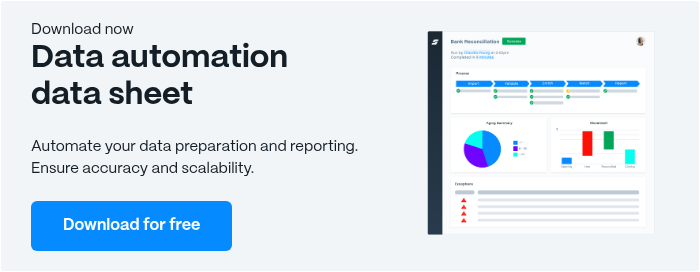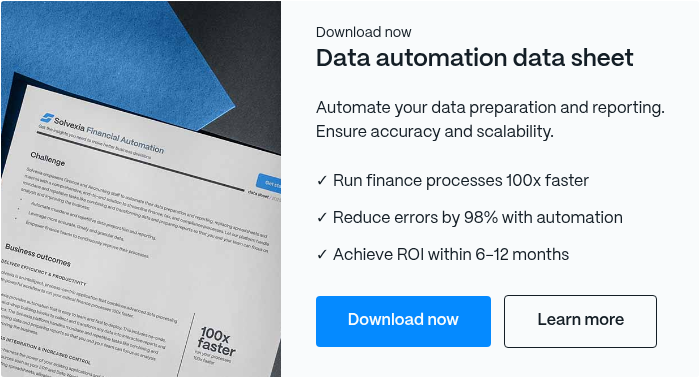Prepaid Expenses: Definition, Examples & Journal Entries

When businesses pay for future expenses upfront, questions quickly arise: "What is a prepaid expense?" and "What's the right way to record and track these advance payments?"
Whether you're paying annual insurance premiums, prepaid rent for office space, or bulk supply orders, understanding prepaid expenses is crucial for accurate financial reporting and cash flow management. These advance payments can significantly impact your balance sheet and income statement if not handled correctly.
In this guide, we'll cover the definition of prepaid expenses, walk through proper recording techniques with clear journal entry examples, and show how automated financial software can streamline the entire process from initial payment to final amortization.
Coming Up
2. Why Do Companies Use Prepaid Expenses?
3. Common Examples of Prepaid Expenses
4. How to Record Prepaid Expenses in Journal Entries
5. Are Prepaid Expenses a Debit or Credit?
6. How Prepaid Expenses Affect Financial Statements
7. Prepaid Expenses vs Accrued Expenses
8. Final Thoughts on Managing Prepaid Expenses
What is a Prepaid Expense?
A prepaid expense refers to future expenses that are paid in advance. When your business makes these advance payments, the prepaid expenses are recorded as a current asset on the company's balance sheet. Then, over time, as you actually use or consume what you paid for, it gets recorded as an expense on the income statement during the same accounting period when you receive the benefit.
As the company realizes the benefits of the prepaid expense, the value of the current asset decreases and transforms into a regular business expense.
Real-World Example: Let’s say your company pays $12,000 upfront for a full year of office rent in January. This prepaid rent starts as a $12,000 current asset on your company's balance sheet. Each month, as you occupy the office space, $1,000 moves from your prepaid rent asset to rent expense on your income statement. The prepaid expenses recorded as assets are gradually expensed as the company realizes the benefit of occupying the office. By December, the prepaid asset reaches zero, and you’ve properly recorded $12,000 in rent expenses throughout the year.
The same principle applies to prepaid insurance - if you pay your annual business insurance premium of $6,000 in advance, it starts as a current asset and converts to insurance expense at $500 per month as the coverage protects your business.
Why Do Companies Use Prepaid Expenses?
Companies use prepaid expenses for both practical business reasons and accounting compliance. Here's why they matter:
Business Benefits
Cost Savings: Many vendors offer discounts for upfront payments. Pay your annual insurance premium in advance and you might save 5-10% compared to monthly payments.
Rate Protection: Locking in current prices protects against inflation. When you prepay rent or insurance, you're secured against rate increases during that period.
Cash Flow Planning: Prepaid expenses help with budgeting by eliminating surprise monthly bills. You know exactly what your major expenses will be for the year.
Vendor Relationships: Suppliers often prioritize customers who pay upfront, leading to better service and terms.
Accounting Requirements
The primary accounting reason prepaid expenses exist is due to Generally Accepted Accounting Principles (GAAP). GAAP requires that expenses be recorded in the same accounting period when your business actually receives the benefit - not when you make the payment.
This matching principle ensures your financial statements accurately reflect your company’s performance. Under accrual accounting, prepaid expenses are recognized as assets and expensed over time as the benefit is received, rather than immediately as in cash basis accounting. When prepaid expenses are recorded on the balance sheet as assets initially, then gradually converted to expenses as you use them, your income statement shows costs aligned with the periods they actually help generate revenue.
Without this process, paying $12,000 for annual rent in January would make that month look artificially expensive and the remaining 11 months artificially profitable.
Common Examples of Prepaid Expenses
Prepaid expenses show up across every type of business, from startups to Fortune 500 companies. For each example, the prepaid amount is initially recorded as an asset and then expensed over time as the benefit is received. Here are the most common categories with real-world scenarios:
Rent and Leases
Prepaid rent is one of the most frequent prepaid expenses. When you sign a commercial lease, landlords often require the first and last month's rent upfront, plus security deposits.
Example: Your business signs a 2-year lease at $5,000/month and pays $15,000 upfront (first month + last month + security deposit). The $10,000 for first and last month becomes a prepaid rent asset, while the $5,000 security deposit is recorded separately.
Other lease prepayments:
- Equipment leases paid quarterly or annually
- Vehicle lease payments made in advance
- Storage facility rentals
Insurance Policies
Prepaid insurance typically offers the biggest discounts for annual payments. Most business insurance providers give 5-15% discounts for paying the full year upfront.
Example: Your general liability insurance costs $3,600 annually, but only $3,000 if paid upfront - saving you $600. This $3,000 becomes a prepaid insurance asset that converts to $250 monthly insurance expense.
Common insurance prepayments:
- General liability and professional liability
- Workers' compensation insurance
- Property and equipment coverage
- Directors and officers (D&O) insurance
Software Subscriptions
Modern businesses often prepay for software to lock in current pricing and avoid monthly billing hassles.
Example: You pay $1,200 for an annual project management software subscription instead of $120/month. This creates a $1,200 prepaid expense that becomes $100 monthly software expense.
Other prepaid business expenses include:
- Legal retainers and professional services
- Bulk supply orders and inventory
- Prepaid advertising campaigns
- Annual conference and membership fees
- Estimated quarterly tax payments
How to Record Prepaid Expenses in Journal Entries
Recording prepaid expense journal entries follows a two-step process: first you record the initial payment as an asset, then you gradually convert portions to expenses as you use them. Let's walk through both steps with a clear example.
Initial Recognition as an Asset
When you first pay for a prepaid expense, you're exchanging one asset (cash) for another asset (prepaid expense). Here's how to record prepaid expenses initially:
Example: Your company pays $12,000 for annual office rent on January 1st.
Initial Journal Entry:
What's happening:
- Prepaid expenses are a debit to the asset account (increases assets)
- Cash gets credited (decreases assets)
- Your balance sheet stays balanced - you've simply traded cash for a prepaid asset
Monthly Amortization Entries
Each month, as you occupy the office space, you'll convert 1/12th of the prepaid rent into an actual expense.
Monthly Journal Entry (recorded at month-end):
What's happening:
- Rent expense increases (debit) - hits your income statement
- Prepaid rent decreases (credit) - reduces the asset on your balance sheet
- After 12 months, prepaid rent reaches $0 and you've recorded $12,000 in total rent expenses
Are Prepaid Expenses a Debit or Credit?
Quick Answer: Prepaid expenses are initially recorded as a debit (when you pay for them), then become credits as you use them up. The timing and transaction type determine whether you're debiting or crediting the prepaid expense account.
Here's exactly when prepaid expenses are debits versus credits:
When Prepaid Expenses Are Debits
Scenario: Making the initial payment for future services or goods
Example: You pay $6,000 for annual business insurance
Why it's a debit: You're increasing an asset account (prepaid insurance), and asset increases are always debits.
When Prepaid Expenses Are Credits
Scenario: Converting the prepaid expense to a regular expense as you use it
Example: One month of that insurance coverage expires ($500)
Why it's a credit: You're decreasing an asset account (prepaid insurance), and asset decreases are always credits.
The Simple Rule
Think of it this way:
- Debit prepaid expenses when you're building up the asset (paying for future benefits)
- Credit prepaid expenses when you're using up the asset (receiving the benefits)
The balance of your prepaid expense account will gradually decrease to zero as you credit it each month, while your expense accounts grow as you debit them.
How Prepaid Expenses Affect Financial Statements
Understanding how prepaid expenses impact your financial statements is crucial for accurate reporting and analysis. The effects change over time, from initial payment through final expense recognition.
Initial Payment Impact
When you first pay for a prepaid expense, your financial statements are affected, but in a balanced way. Here's what happens:
Balance Sheet Changes:
- Prepaid expenses on balance sheet increase (new asset created)
- Cash decreases by the same amount
- Net effect: Total assets remain unchanged - you've simply exchanged one asset (cash) for another (prepaid expense)
Income Statement Impact:
- No immediate effect - no expense is recorded when you make the payment
- This follows GAAP principles: expenses should match the period when benefits are received
Example: Pay $6,000 for annual insurance in January
- Balance sheet: +$6,000 Prepaid Insurance, -$6,000 Cash
- Income statement: No change
Monthly Amortization Impact
Once your amortization schedule begins, both statements are affected during each accounting period:
Balance Sheet Changes:
- Prepaid expense asset decreases
- Total assets decrease by the amount expensed
Income Statement Changes:
- Operating expenses increase
- Net income decreases by the same amount
Example: Recording January's insurance expense ($500)
- Balance sheet: Prepaid Insurance decreases by $500
- Income statement: Insurance Expense increases by $500
Prepaid Expenses vs Accrued Expenses
Prepaid expenses and accrued expenses represent opposite timing scenarios in business accounting. With prepaid expenses, you pay first and receive the benefits later, while accrued expenses mean you receive the benefits first and pay later.
The key difference shows up on your balance sheet. Prepaid expenses appear as current assets because they represent future value you've already paid for, like prepaid rent or prepaid insurance. Accrued expenses appear as current liabilities because they represent money you owe for benefits already received, such as utilities used but not yet billed or employee wages earned but not yet paid.
From a cash flow perspective, prepaid expenses immediately reduce your cash when you make the payment, then gradually convert to expenses over time. Accrued expenses have no immediate cash impact but create obligations for future payments while immediately affecting your income statement.
Both concepts ensure your financial statements follow the matching principle, where expenses are recorded in the same period as the benefits received, regardless of when cash actually changes hands.
Final Thoughts on Managing Prepaid Expenses
Prepaid expenses are fundamental to accurate financial reporting. Whether you’re recording prepaid rent, prepaid insurance, prepaid service, or other advance payments, consistent tracking ensures your financial statements reflect true business performance.
The key is establishing reliable systems for initial journal entries and monthly amortization schedules. Missing these adjusting entries can distort your balance sheet and create audit issues. Financial automation software can streamline this process, automatically posting monthly amortization entries and reducing the risk of human error.
Beyond compliance, prepaid expenses offer real business benefits - from securing annual payment discounts to creating predictable monthly expenses. Used strategically, they strengthen both your accounting accuracy and cash flow management.
FAQ
Intelligent reconciliation solution
Intelligent rebate management solution
Intelligent financial automation solution
Intelligent Financial Automation Solution
Intelligent financial automation solution
Intelligent financial automation solution
Intelligent financial automation solution
Intelligent financial automation solution
Intelligent regulatory reporting solution
Free up time and reduce errors
Recommended for you

Request a Demo
Book a 30-minute call to see how our intelligent software can give you more insights and control over your data and reporting.

Reconciliation Data Sheet
Download our data sheet to learn how to automate your reconciliations for increased accuracy, speed and control.

Regulatory Reporting Data Sheet
Download our data sheet to learn how you can prepare, validate and submit regulatory returns 10x faster with automation.

Financial Automation Data Sheet
Download our data sheet to learn how you can run your processes up to 100x faster and with 98% fewer errors.

Financial Automation Data Sheet
Download our data sheet to learn how you can run your processes up to 100x faster and with 98% fewer errors.

Financial Automation Data Sheet
Download our data sheet to learn how you can run your processes up to 100x faster and with 98% fewer errors.

Financial Automation Data Sheet
Download our data sheet to learn how you can run your processes up to 100x faster and with 98% fewer errors.

Financial Automation Data Sheet
Download our data sheet to learn how you can run your processes up to 100x faster and with 98% fewer errors.

Financial Automation Data Sheet
Download our data sheet to learn how you can run your processes up to 100x faster and with 98% fewer errors.

Rebate Management Data Sheet
Download our data sheet to learn how you can manage complex vendor and customer rebates and commission reporting at scale.

Top 10 Automation Challenges for CFOs
Learn how you can avoid and overcome the biggest challenges facing CFOs who want to automate.
.svg)









